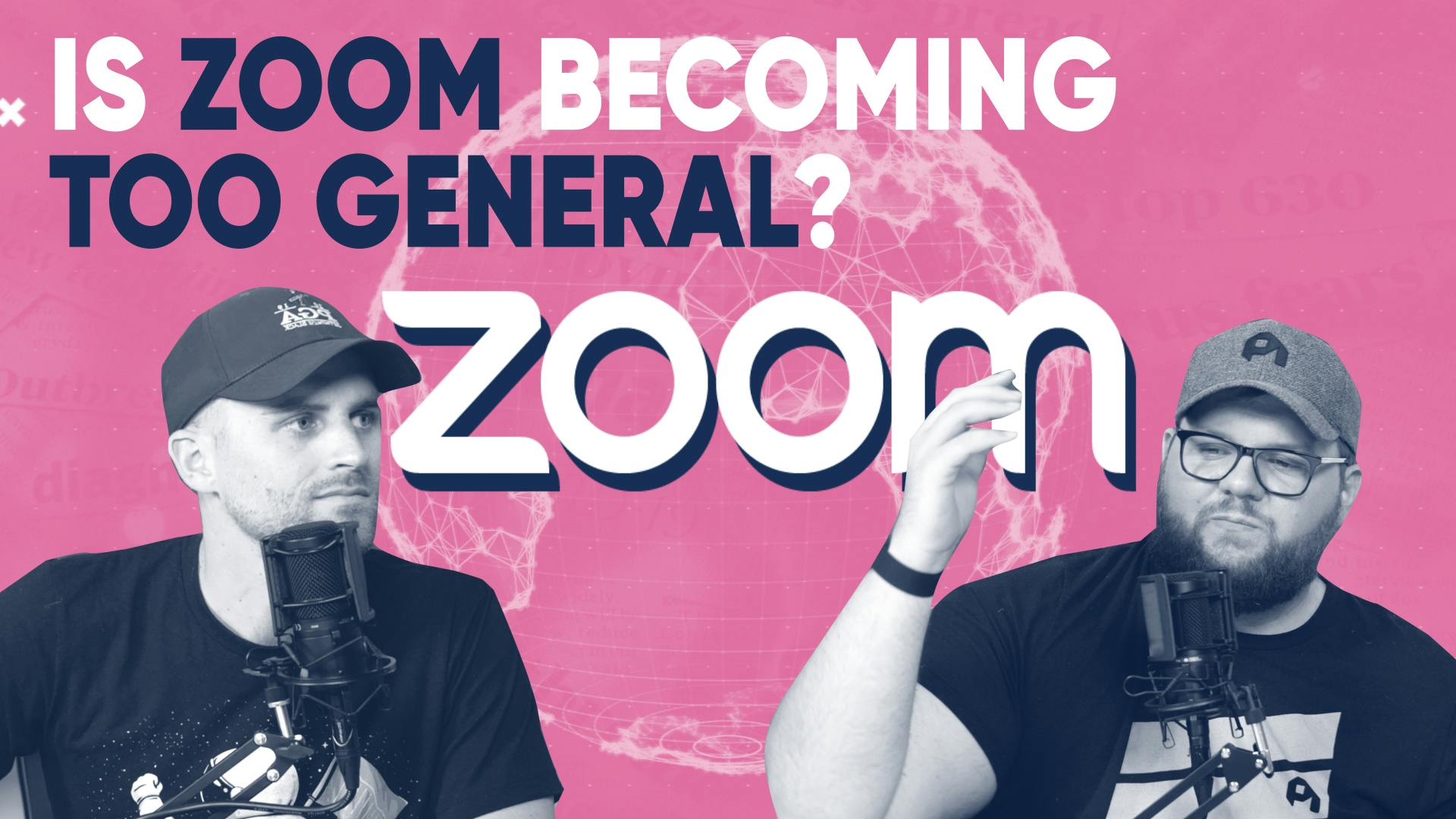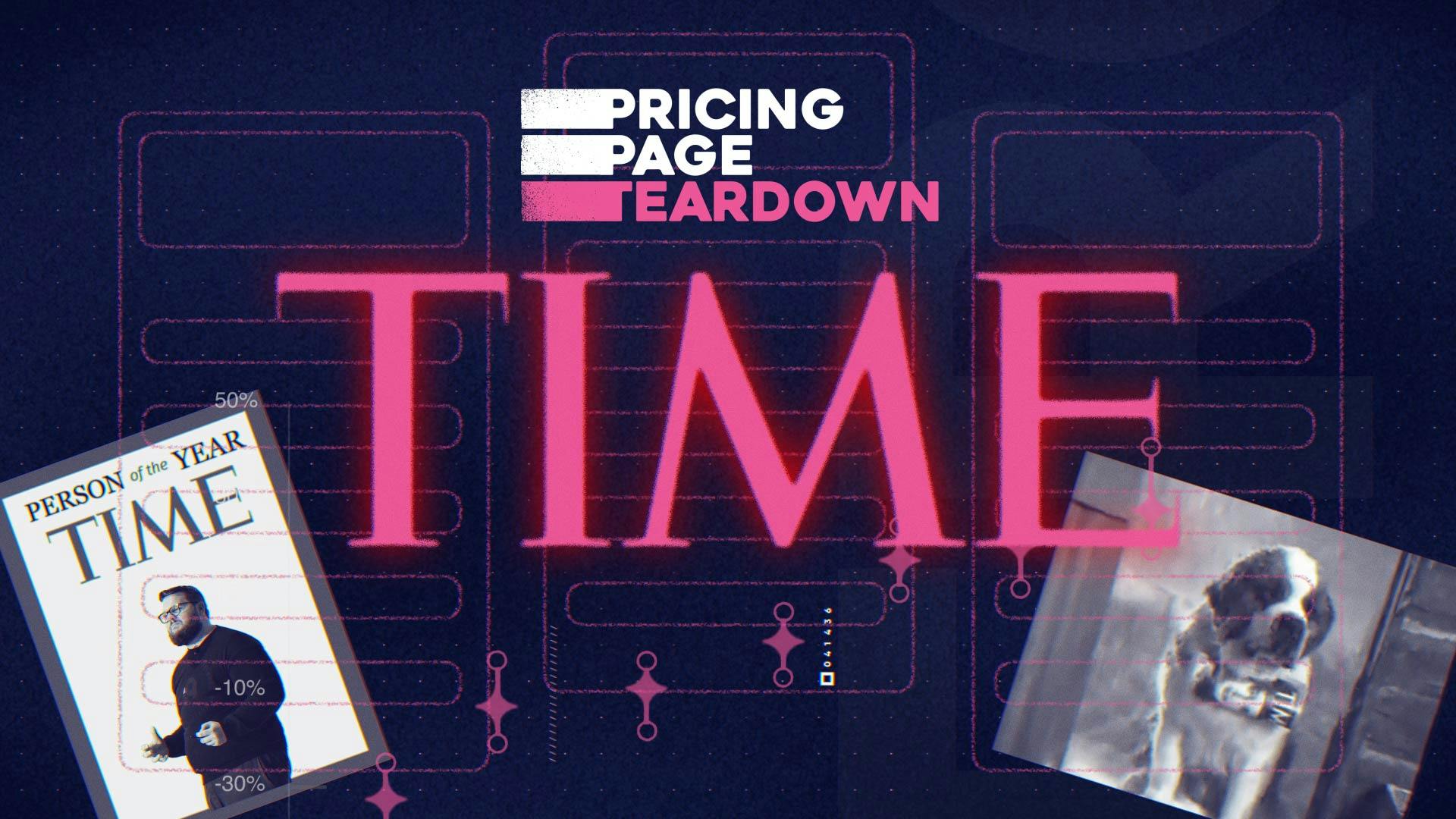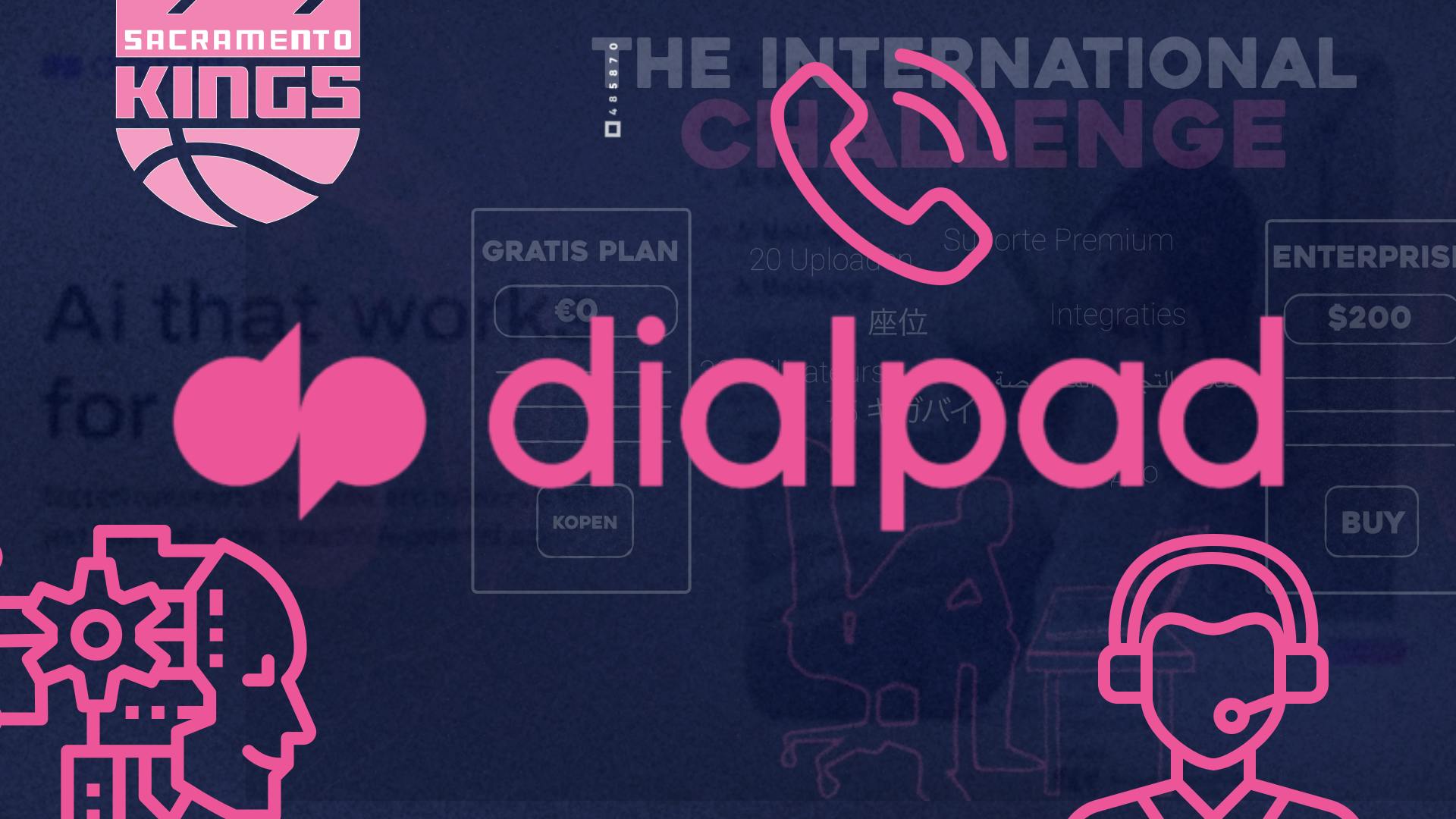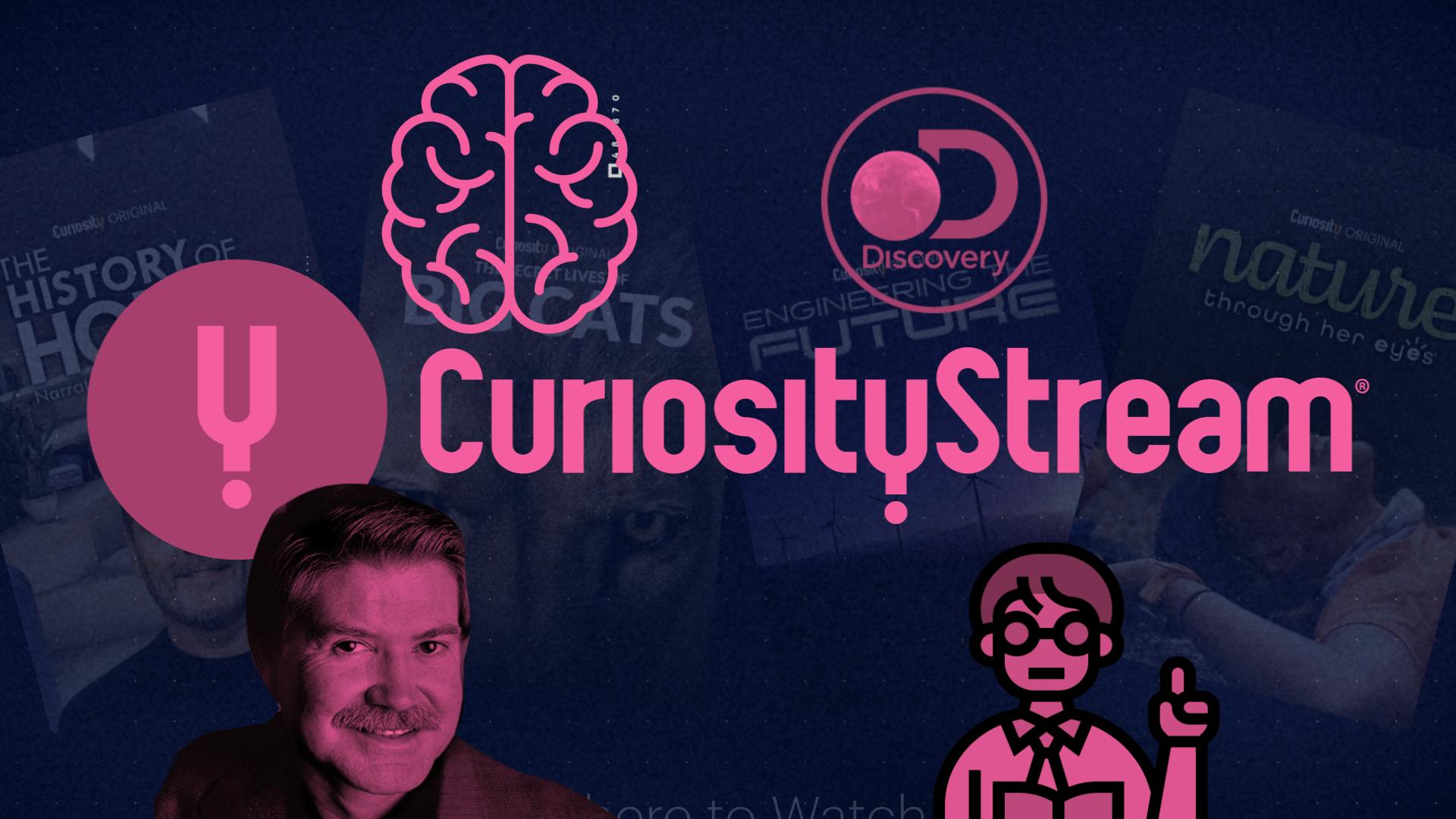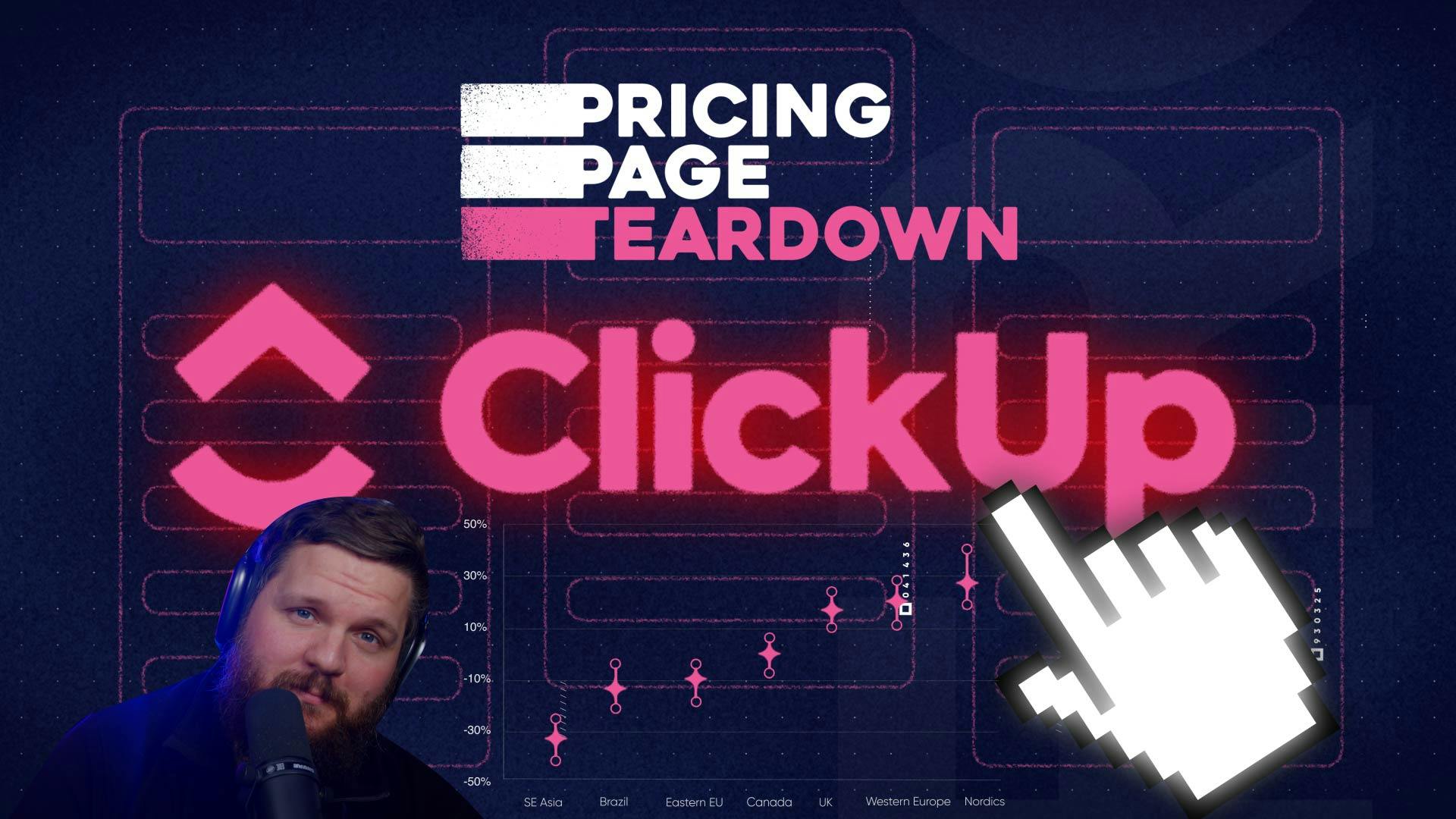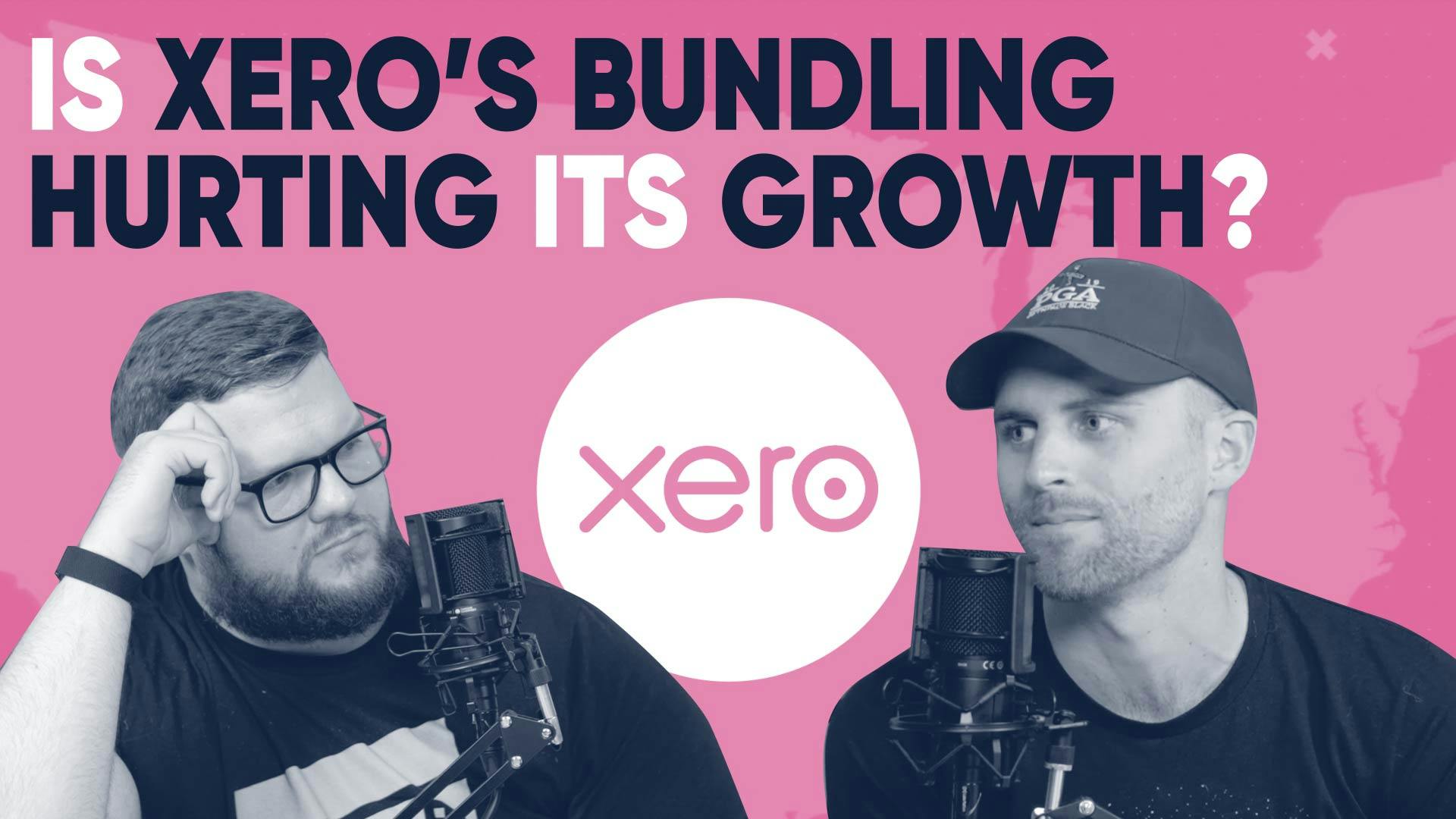
Hey.com: A bold and opinionated pricing strategy
This episode might reference ProfitWell and ProfitWell Recur, which following the acquisition by Paddle is now Paddle Studios. Some information may be out of date.
Please message us at studios@paddle.com if you have any questions or comments!
Hey.com
Does Google finally have a foe?
Hey.com is a new email tool created by David Heinemeier Hansson and Jason Fried, founders of Basecamp. They believe email needs to be a delightful experience and they're taking on Google and Gmail to make that happen. The founders are known for building opinionated products and voicing their opinions through various channels. Hey revolutionizes email by rethinking your email workflow entirely. It has an Imbox to screen important messages, a single library to see attachments independent of emails, and a focus mode to get through certain emails more rapidly. The biggest feature is privacy as Hey.com blocks all pixel tracking technology and claims that they'll never sell your data. However, they charge $99 per year, which includes the hey.com email address and 100 GB of storage.
So, is there enough here to justify a $100 annual price tag, especially when the alternative is a seemingly free product from Microsoft or google who will sell all of your data? Does this calculus change when you realize you can’t use your Hey.com email address with other workflows already built for gmail? Well, DHH and Jason think so, but we’re going to find out by collecting data from 10,452 current and prospective hey.com customers and we’ll reveal all the data to you in just moments.
Hey's pricing page
Leading with their value prop
The company's hero copy addresses the primary concern that potential users may have about paying $99/year for email. They argue that "free" email providers come at the cost of privacy and personal data, which ultimately ends up being more expensive. This strategy addresses the company's main criticism and highlights their primary value proposition—privacy. By leading with conviction and their biggest takeaway, the company is effectively targeting a market willing to pay a premium for privacy. This is a rare and brilliant move, especially for a free product. When addressing a large market like this, it's important to have personality and conviction in your beliefs and positioning.
Simplicity
Hey's pricing page is simple and straightforward. They offer only one pricing tier and no add-ons, making it easy for customers to understand the cost of the service. The page also includes a list of frequently asked questions that cover all the important details about the service, such as billing in multiple currencies and the cost of ultra-short email addresses. Additionally, Hey addresses common objections and clearly states what they do and do not offer. They even provide the reassurance that if you decide to stop using their product, you can still keep your email address and have emails forwarded to another address. Overall, Hey's pricing page provides all the information customers need to make an informed decision.

Data and analysis
Know your value propositions
Hey's key takeaway is to understand your value propositions and focus on them. Hey capitalizes on their privacy feature as a unique selling point, confidently emphasizing it in their opening sentence. Our data shows that people are willing to pay for privacy-oriented products, making it increasingly important to prioritize privacy and security features. Efficiency features have a 10% impact on willingness to pay, while privacy and security features have nearly a 20% impact. To improve your business, focus on the value proposition with the highest willingness to pay and make it prominent throughout your website and copy. This will significantly improve your funnel and attract customers with a higher willingness to pay.
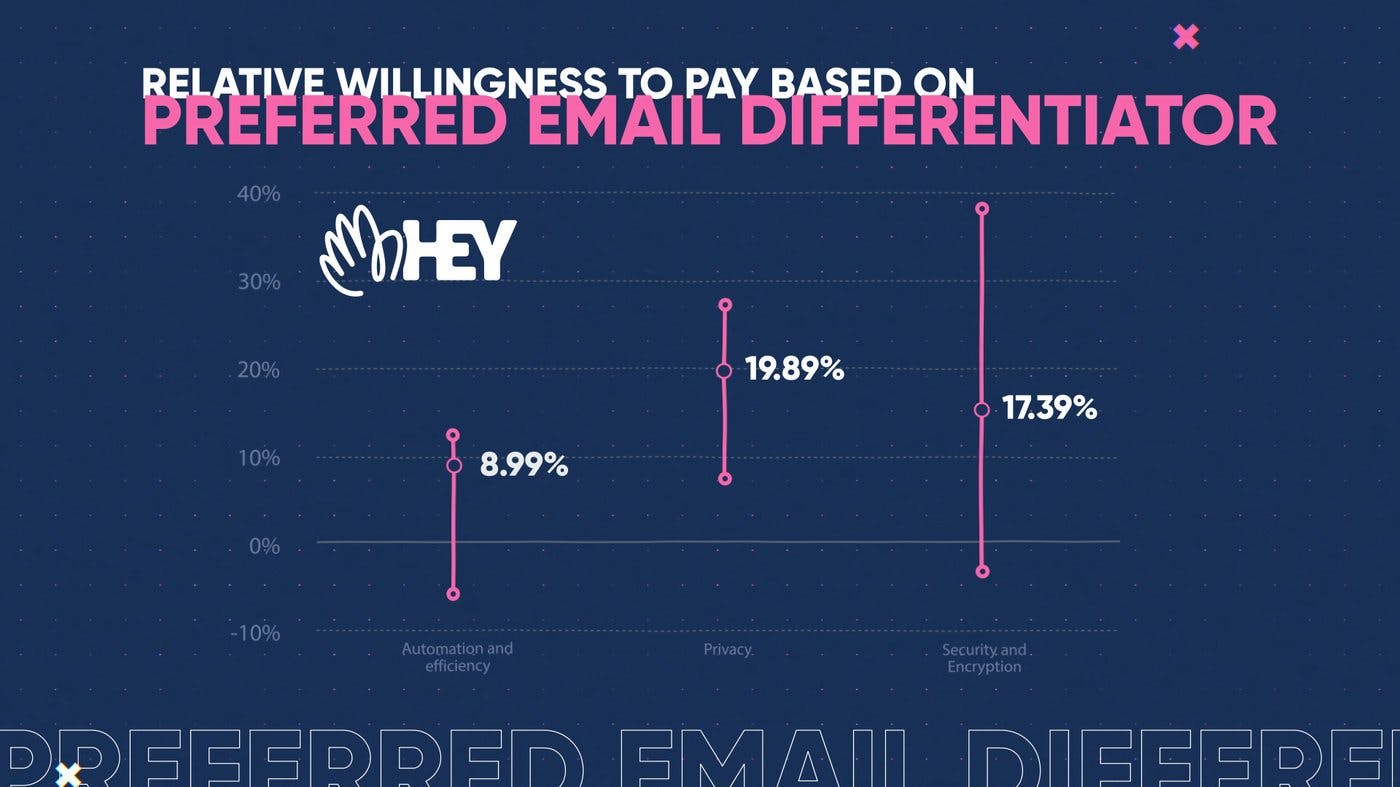
Annual billing and consumer products
Annual billing is important in B2C because it reduces churn and increases customer lifetime value. Hey.com's pricing is within the AMEX effect, meaning it has a price point with few barriers to try the product. SMBs should take advantage of this. Hey.com has simple pricing, making it easy to test and convert customers. The target customer is the mass affluent, who value privacy in email and are drawn in by Hey.com's specific price point.
We analyzed willingness to pay for Hey.com's value propositions, focusing on price cliffs - popular price points for different customer segments. We found cliffs at $50, $100, and $150, making Hey's $99 price point safe within the AMEX effect. Using these price points, even with a larger discount, can increase sales. For your business, ensure your annual plan falls within one of these effects.
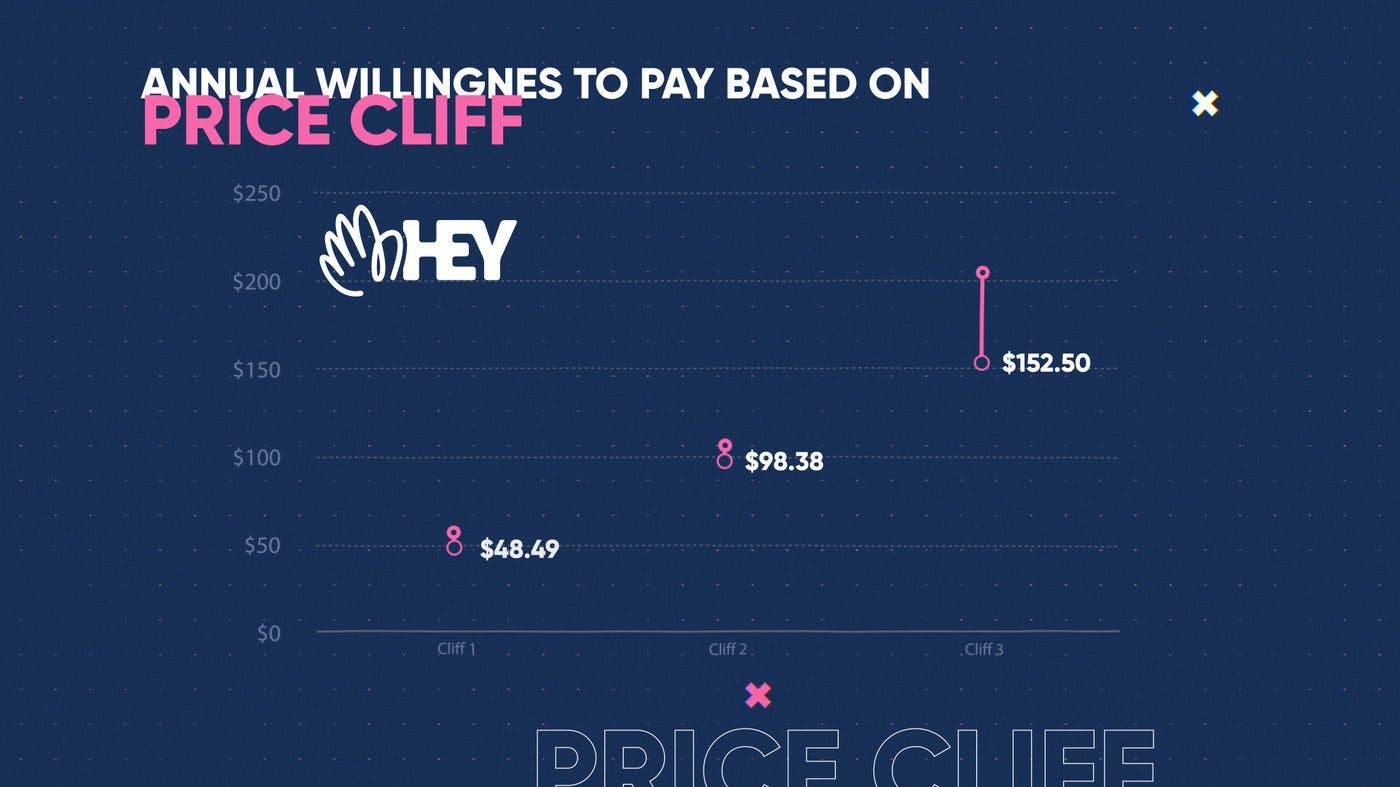
Price localization
Price localization is crucial for consumer products since people's willingness to pay varies greatly by region due to different average incomes, standards of living, and value systems. Our data shows that Hey is not taking advantage of this opportunity and is leaving money on the table. Although they may not prioritize it yet, Hey should consider implementing price localization, especially because their internet business attracts customers worldwide.
According to our data, some markets, such as India, Eastern Europe, and Brazil, are less willing to pay than the US, while others, like Nordic countries, are willing to pay over 85% more. Adjusting to these differences is crucial for increasing conversions in these regions. Additionally, some countries prioritize privacy more than others, which affects their willingness to pay for Hey's value proposition. Overall, localizing your pricing is an easy way to increase revenue and prepare for more aggressive monetization projects in the future. This will also ensure that your billing system is set up and internal pricing politics are figured out.
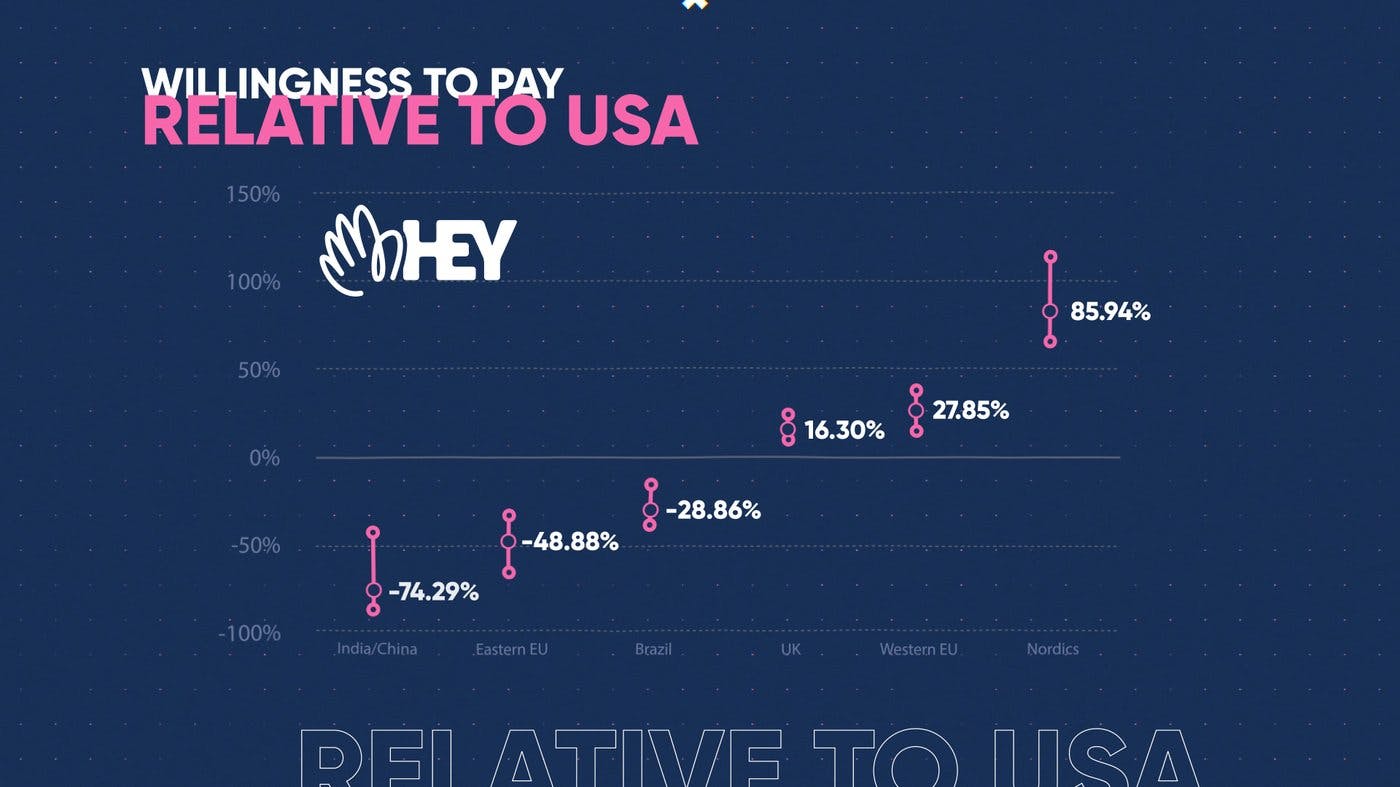
In conclusion, Hey.com is a new email tool that aims to revolutionize the email experience by prioritizing privacy and rethinking the email workflow. While their annual price tag of $99 may seem steep compared to free alternatives, Hey.com's focus on privacy and security features has resonated with customers, making it a worthwhile investment for those who value their online privacy. Hey.com's pricing page is straightforward and effectively communicates the company's value proposition. Overall, Hey.com's approach to email is a refreshing take in a market dominated by tech giants like Google and Microsoft.
Want a bold pricing strategy for your business too?
Price Intelligently by Paddle is revolutionizing how SaaS and subscription companies price and package their products. Founded in 2012, we believe in value-based pricing rooted in first-party research to inform your monetization strategies. We combine expertise and data to solve your unique pricing challenges and catapult growth.
(00:00):
This is either the dumbest thing or the most brilliant thing we've ever seen.
(00:06):
Welcome to Pricing Page Teardown, where the ProfitWell crew breaks down strategies and insights on how subscription companies from all corners of the market can win with monetization.
(00:21):
Welcome to a new season of pricing page teardown. I'm Patrick Campbell. And I'm Rob Litterst. And this week we are talking about hey.com, which is the new venture from the Basecamp founders that's taking on the almost 50 year old email space. The Basecamp guys. The Basecamp guys, those guys don't like controversy, do they? They don't like controversy. They don't have strong opinions, let alone lukewarm ones. On my opinions all the way around. All sarcasm aside, hey.com is a fascinating new company that's taking on a space that has just been free for basically the last 50 years minus maybe corporate email. Yeah, and that's very much for security admin, domain administration stuff. And I think this is a really, really good case study for all of us to learn not only how do you take on a very fragmented and also very ubiquitous space, but ultimately how do you use strong opinions in order to guide your monetization strategy. So let's walk through what hey.com is doing with their pricing, what they're not quite getting right that they should probably fix, and ultimately what they're doing well so that you can understand what you should be doing for your business. Whether you're taking on the consumer market or you're a giant B2B company looking to optimize your monetization strategy.
(01:33):
Does Google finally have a faux, you've probably heard about hey.com, the new email tool launch by David Heinemeyer Hansen and Jason Fried, who also founded the project management. Darling Basecamp with hey.com. Dhh and Jason have openly said they're taking on Google and Gmail because email needs to go back to being a delightful experience. Email is so fundamental to our day-to-day productivity, but it's become a stressful and even dreadful mess due to lack of innovation. As DHH puts it, Gmail has basically frozen all innovation and email for a good decade. Nothing happened because no one dared step close to Gmail until hey.com. That is bold. Visionary statements like this are new to DHH and Jason who are not shy to voice their opinions. In fact, they're very methodology towards growth is to build an opinion in a product that's right for the world and then voiceless opinions until they're heard through every platform available to them.
(02:26):
Books, blog posts, podcasts and social media. DHH educates us that when you're trying to push a new movement, technical or organizational or whatever, whoever says protests or loud voices don't work is just ignorant. And in the case of hey.com, this strategy worked as the founders received much acclaim for working on such a tough problem and got over 70,000 signups to their invite only wait list. In the initial days of launching the product, the hype pushed more drama though, or maybe it's the other way around with Apple rejecting the mobile app soon after the hey launch for not allowing in app purchases of which Apple makes a 30% cut sticking to their style of speaking up. And now the founders described Apple as gangsters causing a public uproar, which eventually led to heys app being approved though, and Apple quietly amending their developer rules at the 2020 Worldwide conference to allow for an official app store appeals process.
(03:22):
All hype aside, the real innovation comes in how Hey revolutionizes email. By rethinking your email workflow entirely using the inbox short for important inbox, you can easily screen important messages based on if someone's emails should go through or not. There's also a single library, so you can see attachments independent of emails as well as a focus mode to get through certain emails more rapidly. The biggest feature though is privacy hate.com blocks all pixel tracking technology and claims that they'll never sell your data, which means that perhaps the biggest innovation is that they're charging you for email at least $99 per year, which includes the hey.com email address and a hundred gigabytes of storage. So is there enough here to justify a $100 annual prize tag, especially when the alternative is a seemingly free product from Microsoft or Google who will sell all of your data? Does this calculus change when you realize you can't use your hey.com email address with other workflows already built for Gmail? Well, DHHS and Jason think so, but we're gonna find out by collecting data from Kern and prospective hate.com customers and reveal all the data to you in just a bit,
(04:34):
Would you actually pay for personal
(04:35):
Email? There's a lot of spaces where you have something again that was ubiquitously free, then all of a sudden there's like a paid entrant to the market, right? So you saw this kind of with superhuman where why would I pay for superhuman when all of the commands are basically in Gmail, I just have to learn them, right? But superhuman went, no, we have a really strong opinion on how you should do these commands and it's gonna be 30 plus dollars per month. But I think what's really interesting about hey.com is that this was email designed by very opinionated product people, right? And if you've ever met a product person that doesn't have opinions, like they're probably a really bad product person. Mm-hmm. <affirmative> because it takes so much opinion to not only use data but also use intuition. But I think there were probably too opinionated on too many things, right?
(05:21):
Okay. Privacy all about security. I think that's fantastic. I think that's a narrative that they can fight, but then they have really strong opinions about things like you're not allowed to have an email footer. There's so many opinions that they're making their market just comically small, right? Right. Because it's not only people who probably don't want to use this with their business because they're just gonna use G-Suite, then it's probably not people who are like very inbox zero focused. They, they have so many filters and everything like that. They're basically saying the primary key is the email address. Mm-hmm. <affirmative>. So if you send me a newsletter, it's really hard for me to kind of like filter that because any email that I choose not to get from you, I don't get anything from you or I get everything from you and maybe you use the same email address for a bunch of different types of communication with me. And this is where I might use it. Like it's my personal email that I only give out to like friends and family. Yeah. But I kind of just use my, my corporate email. It's probably only if I really, really care about the tracking pixels and the sales and these types of things.
(06:20):
They are being super opinionated. I agree with you. I think they're going a little bit too far on a few things like the footers. I think like that's just a little bit too far for me. On the other side though, they're not gonna reach huge market share with this anyway. Like
(06:31):
I, I think you're right, but I think that argument doesn't matter because they're making it so comically small and, and you can never fault these folks for not being thoughtful. Like they're so thoughtful. Their teams are so thoughtful, but they're product people and they're building this based on being product people, not engineers, not salespeople, not marketing people. It's email, right? Everyone uses, everybody uses it and therefore a comically small portion of the market is still maybe a hundred million plus product and company. Right? Way
(06:56):
Bigger than
(06:57):
And if they get people all hopped up on the privacy wave. And I think that's what's really interesting is they're gonna be able to ride this wave of don't sell me. So let's
(07:04):
Take a look at their pricing page and then let's also dig into the data that we collected on their prospective customers.
(07:09):
Definitely. Cuz we're gonna be able to figure out what are they doing right, what are they doing not so right. So that ultimately you can use this as a case study for your own monetization strategy.
(07:20):
First up, I absolutely love that they lead their hero copy tackling the number one objection that everybody has with hey.
(07:26):
Yeah. You don't see this a lot. No. And it's just such a brilliant move, especially with such a free product. Do you pay us 99 bucks a year or do you pay with all of your private personal data? Right? They're not wrong. Right? They're absolutely not wrong. Now is it, as you know, hey there's some guy or gal sitting behind a room looking at everything that you write. Not exactly.
(07:47):
So biggest takeaway there, lead with conviction and lead with kind of your biggest takeaway. If you're addressing a huge market like this, you need to have some personality and you need to have conviction over what you believe and what your positioning is.
(07:59):
Simplicity is the other big thing that I take away from this. Mm-hmm. <affirmative>, there's no tier here. There are a couple of little things here and there, but it's just simple. A hundred bucks a year. But the other thing is, is the rest of the page is just q and a. Totally. Right? Yeah. Do they bill in multiple currencies? No. How much are ultra short email addresses? This is the one differentiator you have. If you want two character like PC@hey.com, which Jason dhh, I would pay for that. I also do really like in the simplicity here, how they answer other objections. Do they offer these things? They have no qualms about being like, no we don't. Right? Or Hey, we are going to, but not right now. Or Hey, what happens if I don't wanna use the product anymore? You keep your email address forever. And in addition to that, we will forward any emails that come to your hey.com to whatever other email you want. You
(08:42):
Come to this page and you come away with everything that you need to make a decision on this.
(08:45):
You can keep it simple even if you have some complications within your business.
(08:49):
All right, so let's dig into the data. So where
(08:51):
Does our data come from? Here at ProfitWell, our price intelligently product combines proprietary algorithms and methodologies with a team of pricing experts who think about this stuff more than anyone else, to help companies optimize their monetization strategy. We do this by going out into the market and collecting data from current and prospective customers. Having the ability to collect data from everyone from a soccer mom or dad in the middle of Kansas all the way to a Fortune 500 CIO in South Africa. We then take that data and run it through our algorithms and analyze it in every direction to determine a company's ideal customer profiles, as well as which segments value which features and which segments are willing to pay more. All in the spirit of determining how a company can use monetization for growth,
(09:39):
The first big takeaway, know your value propositions and lean into them. Yeah. I think leaning into them is the most important part. And we saw that on the pricing page, but the data also supports this. People are willing to pay for privacy oriented products, especially in this day and age. Totally. What we ended up doing is we collected a bunch of data from a bunch of hey.com perspective customers and we basically measured their most preferred value proposition or the most preferred positioning that they were kind of resonating with with hey.com and just email in general. And then based on their willingness to pay, we compared that to the aggregate willingness to pay to see how much did these different positionings or value propositions basically increase willingness to pay, right. Or at least correlate with higher willingness to pay. And what we found, which was super interesting is that while automation and efficiency, you know, the, probably the superhuman kind of crowd, right?
(10:28):
Yeah. Did improve willingness to pay by about 10% on a median basis. Things like privacy, security and encryption. These things that hey.com are leading with boosted willingness to pay or at least correlated with about a 20% boost from median perspective to higher willingness to pay and also the highest ranges, right? So almost getting up to 30, 40% increased willingness to pay from that particular group versus kind of the median folks who would even be willing to purchase some sort of email product. Yeah. So it's probably pretty obvious at this point we've pretty much beaten this to death. We have beat this to death. Yes, yes, yes, yes, yes. But what you can take away for your business is look for the value proposition that has the highest willingness to pay. It should be the H one on your website. Mm-hmm. <affirmative>, it should be what's emphasized throughout the copy.
(11:12):
So that's, that's the biggest thing. Like it improves the funnel so much and it also obviously gets you the customer that has correlated with a higher willingness to pay. Right. Um, or at least you know, maybe it's lower willingness to pay. So you need to kind of adjust your marketing or maybe change up the customer that you target. Next up, annual billing in consumer products, and I would even argue in SMBs, should take advantage of the Amex effect. Totally. What's beautiful about hey dot com's pricing, they don't have like 17 tiers. They don't have a bunch of different like widgets and s and it's right in that particular range where you could just swipe the Amex and be like, cool, I'll check this out. Right. I understand. Like we're speaking as, I think they call like people in tech, the mass affluent. So I don't want to be insensitive, but I'm trying to say for their target customer people have the privilege to care about privacy with their email very, very specifically.
(11:57):
Mm-hmm <affirmative>, they've basically honed in on this dollar amount that not only gets people through the door and testing it, but also keeps it really, really simple for conversion. We've basically tested willingness to pay for people who were willing to pay for something like email. These are people who actually resonate with some of the value propositions of hey.com and we basically looked at the price Cliffs. Now Price Cliffs, for those of you who don't know, it's basically when you measure an elasticity curve, what are the natural little cliffs of different types of users that exist? And these typically are kind of the tiers that you should focus on. But in the case of hey.com, these are the different price points that they basically could put this mono price for their product. And what we found is that the Cliff won was right around $50. Mm-hmm.
(12:37):
<affirmative>, very, very common Amex effect price. The next cliff was a hundred dollars and the next cliff was 150. Right. And here's a little bit of a secret. Most products under $300, this is exactly what it looks like. It's typically 50 a hundred, 1 50, 200. Totally. And so the big takeaway for your business, whether you're smb, a consumer product, is make sure that your annual plan is within one of these Amex effects places for some reason psychologically over, you know, thousands of products at this particular point. A hundred or 150. That's a really quick swipe that I can make for that $10 a month or even $20 a month product that's, you know, heavily discounted for the annual plan. So
(13:16):
Last key point, price localization is key for consumer products.
(13:20):
Yeah. And they very specifically said they're not doing price localization. I think they kind of hinted in their pricing page, right. If they're gonna come out with it eventually, but huge missed opportunity. They probably don't care at the launch about this right now cuz they're just trying to make sure they get people using it. But huge, huge opportunity for them because they might just be overpriced for that customer and they might be way underpriced when it comes to that customer. The
(13:41):
Nordic. Yeah.
(13:42):
Yeah, totally. A hundred percent.
(13:44):
And we saw this in the data. What you're seeing right now is actually the relative willingness to pay to the United States and you can see these huge fluctuations, India and China, about 75% less than the United States. Then on the other end of that we saw about an 85% premium in the Nordics, which honestly makes a lot of sense with GDPR and everything that we see out there.
(14:02):
Yeah. This is very outside the norm. The level to which these swings are are pretty big. Yeah. Normally we'll see, like I think we did a, a basic study of like a million and a half data points and I think the max we normally saw with the Nordics was like a 40% lift relative to the United States. Wow. Both Western Europe who has been very, very specific around, you know, privacy regulations, they're willing to pay is bumped and the Nordics which care, you know, cares about this a lot. I think it's really focused and what's really kind of fascinating is Eastern Europe, particularly post Soviet block, I'm making some big, you know, generalizations here. Right. They kind of assume like, eh, privacy, whatever, like I'll, I'll be more secure in different places. Right. Even though they might be the ones who need more of the privacy.
(14:44):
It's one of those things where like an internet business, your customers are everywhere and you totally just need to find them basically. And it's like this is a huge region that is willing to pay for this.
(14:51):
I feel like the hey.com team is probably too opinionated to do this <laugh>. Uh, it's more like mission Oh brand. Like I could see them not raising the price in the Nordics. Yeah. Um, because everyone should have this and we shouldn't charge more for it, but maybe lowering the price and some of these other regions that maybe need it. But the bigger takeaway for your business is localization is one of the easier levers to pull and I think it's a good starter project for most folks in monetization because you have to make sure your billing system's set up. Mm. Um, you're not changing any of your packaging typically or you're positioning so that when you move on to like more aggressive projects like value metrics and packaging, you already have the internal politics figured out in terms of pricing and you also have the infrastructure to make a fairly quick change. Totally. Once you've made a decision. So let's recap
(15:42):
First and foremost, know your value propositions and lean into them. Mm-hmm. <affirmative> with these guys, it's privacy, whatever it is. Just make sure you're differentiated and you're leaning into that differentiation so that people understand how you compare to the other companies in your space and understand why they're willing to pay for your
(15:56):
Product and it's ultimately better for your funnel efficiency. Totally. And obviously your willingness to pay. Yeah. And you want to be targeting those folks who actually care about your product, not just this general mass of people who don't care.
(16:07):
Exactly. So second piece, if you're doing annual billing for b2c, which everybody should be doing because it helps out with churn, stay within the amex effect, take advantage of those kind of nodes at 50, a hundred, one 50. Yeah.
(16:20):
Um, to make it a swipe of a credit card. Mm-hmm. <affirmative>, even if you are maybe discounting a little more heavily than you want six months off. Mm-hmm. <affirmative>, um, I've seen some people with, uh, iOS apps or Google play to kind of stir the uh, nice, uh, hey.com versus Apple controversy going on. Yeah. Some people what they'll use is their annual plan. You can only sign up via the web. I'm fairly certain this is gray within Apple's terms, but yeah, let's just say I know a number of different subscription mobile companies that this is what they do. But the final piece is price localization is key for consumer products, it's key for B2B products as well, but I think with consumer products you're just in such a globalized world. Totally. And what that means is you have a lot of different types of people checking out your products. Um, this is where a lot of non-US companies have been super successful, making sure they're selling not only in their home regions but also in the United States. You should be doing this even as a US company externally because it's one of those things where different willingness to pay, standard of livings, all those types of things, different competitive density. Mm-hmm. <affirmative> all contributes to different willingness to pay in different regions.
(17:22):
That's it for this week's episode of pricing page. Teardown. If you got value from this episode, if you loved it, make sure you share it with on your social medium of choice that helps us get more users and if we get more users, we can do more research to help the greater community. And of course, make sure you're subscribed@pricingpageteardown.com and if you want help with this type of pricing research for your company, feel free to email me@patrickprofitable.com or rob profitable.com and we'll make sure you get hooked up with the right people to make sure you're focused on getting your monetization right. What's up next week, pc? Next week? We have the giant enterprise darling of 2020. Mm-hmm. <affirmative>, which is Zoom, which I will say probably has the best, if not one of the best B2B SaaS pricing strategies of all time. Yeah. There's so many learnings and there's some things though that can even improve further so we can make sure that we're all learning together in the world of pricing. Sounds like a plan. We'll see you next week.
